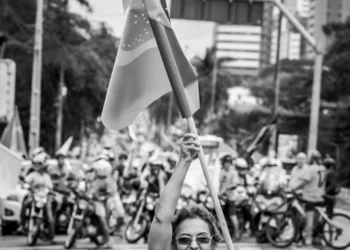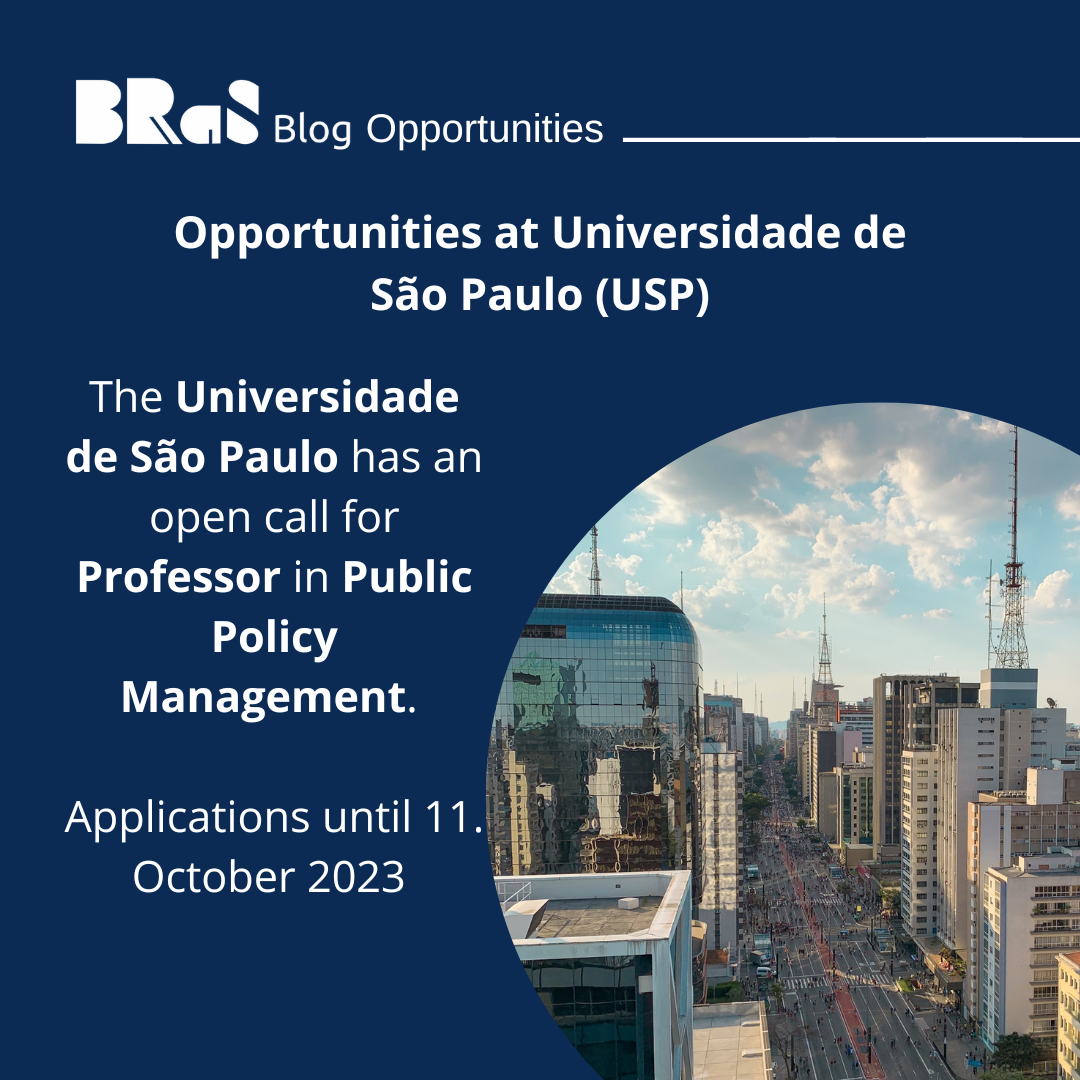The Brazilian emigration process is considered recent. It was only in the 1980 years that Brazil, recognized throughout its history as a country of immigration, with the arrival of foreigners contributing to the formation of its national identity (Ribeiro, 1995; Lesser, 2001), passed to be considered a country of emigration. The first Brazilian migratory flows emerged outside the country – especially to Paraguay, Japan, and the United States – as a result of economic stagnation and unemployment (the end of the Military government and the “economic miracle”), associated with the increase in transport and information facilities, in an emergency context of world globalization.
At that time, there were practically no public policies for emigrants and the legal aspects were even more restrictive (IOM-Brazil, 2021). In 1980, law nº 6.815, known as the “Estatuto do Estrangeiro”, was sanctioned, during the military dictatorship and the Cold War period. It has already been implemented with a delay because it does not consider Brazil as a country sending migrants and addresses the issue of migration as a question of national security and not of human and civil rights, or even as an aspect of economic development.
Over time, the flows gained more intensity, and visibility and were diversified, both in host countries and in terms of characteristics of the emigrant population (gender, race, class, etc.). The important financial contribution of emigrants in sending remittances to Brazil, their social, political, and economic participation in the host country, and the impact of cases of discrimination against Brazilians abroad began to draw the attention of the Brazilian State and other actors, from a solid and growing way. There were advances in terms of public policies and legislation, which culminated in the Nova Lei de Migração (nº 13.445), less restrictive than the Estatuto do Estrangeiro and with a greater focus on the issue of Human Rights with a chapter focused on emigrants – “deals with migrations as an integrated theme and from the perspective of a country of transit, origin and destination, as Brazil currently is” (Amaral; Costa; Allgayer, 2017, p. 259-259 – Our translate).
Added to this aspect, are several international and bilateral agreements, related to the development of Brazilian foreign policy, and restructuring processes of the Ministério das Relações Exteriores (MRE – Itamaraty), responsible for the broad consular network of support and service to this population (currently, present in around 200 countries), as well as strategic actions to maintain contacts and links, which involve legal, cultural, social and citizenship issues.
Currently, it is also important the civil society organizations (NGOs) and self-organized groups. With ethnic, religious, cultural, or social nature, many of them are highly professionalized and trained far beyond the first groups – formed based on precepts of solidarity and empathy to help newcomers, in various forms such as the search for work, housing, education, documentation and regularization of migratory status, adaptation to the new territory and new culture, as well as social participation and visibility, in addition to maintaining transnational identity and emotional ties. Often, these organizations or groups prove to be relevant front-line actors with articulations able to provide immediate responses to the most diverse problems faced by Brazilians abroad, mainly due to their expertise, proximity, and diversity.
Despite all this evolution, the scope of activities, profile, fragilities, and potential of the Brazilian population abroad lacks detailed knowledge and systematic information. In the broad context of social organization, it is known that such information is fundamental in formulating actions aimed at these Brazilians, supporting public managers in defining more effective policies, and promoting a research agenda about this topic. Furthermore, a quality public debate requires consistent data to support more realistic narratives about Brazilians living in other countries, which overcome images spread through partial analyses or unfounded prejudices. And here is a huge challenge.
Since the end of the first decade of the 2000 years, the MRE has released a report containing numerical estimates about this population. The latest (MRE, 2023) reports that in 2022 4.598.735 Brazilians were living outside Brazil, across countries and regions of the planet. It is a systematization effort, based on the service provided by the consular network. However, the data, in general, presents inconsistencies and lacks detail on basic issues, such as gender, age group, race, education level, etc. The Banco Central do Brasil has also published a historical series, since 2010, on financial remittances (income and expenses) generated by Brazilians abroad, by value and country, but there is a lack of detail at the micro and practical levels.
In some countries, such as Japan, the United States, and Portugal, for example, there are local censuses that help in understanding some characteristics, such as location (at the municipal and state level) and minimum profile. However, in many cases, the data is mixed with other foreign populations residing in the country, making identification and understanding a very complex process. And, finally, in the academic research area, the interdisciplinarity of the theme means that studies on international migration are dispersed and isolated in different fields of knowledge, in a kind of “epistemological itinerary” (Sayad, 1998)
“… every immigrant itinerary is, one could say, an epistemological itinerary, an itinerary that occurs, in a certain way, at the intersection of social sciences, as a meeting point for countless disciplines, History, Geography, Demography, Economics, Law, Sociology, Psychology and Social Psychology and even cognitive sciences, Anthropology in its various forms (…), Linguistics and Sociolinguistics, Political Science, etc.” (Sayad, 1998, p. 15 – Our translation).
It should be noted that, in recent years, the popularization of Information and Communication Technologies (ICTs) has helped in the knowledge of information about Brazilians abroad and contacts, as well as in the composition of collaborative study networks. Furthermore, in Brazil, the Lei de Acesso à Informação – LAI (nº 12.527)
Sanctioned in 2011, the LAI regulates the constitutional right of citizens to access public information and applies to the three powers (Union, States, and Municipalities), representing an important step towards consolidating the Brazilian democratic regime and strengthening the policies of public transparency has been an important instrument for acquiring data from public bodies about this topic. Particularly in the case of the “Brazilians Abroad project – Brazilian emigration data platform”
“Brazilian population abroad – Data virtual platform about Brazilian emigration” is a public project development into academic research titled “Brazilian emigrants: Communication networks in the identification of the profile, living conditions, forms of organization and construction of identities” will function as a kind of “observatory”. In a virtual website format (www.brasileirosnoexterior.org), released in February 2023, the platform was built based on concepts of architecture and information for the treatment of digital environments (Nielsen; Loranger, 2007), as well as composed with content resulting from bibliographic (Stumpf, 2011) and documentary (Moreira, 2011) researches. The material was systematized into four categories (for a while), according to aspects of Thematic Analysis (Escudero, 2020): 1) Studies and research; 2) Legislation; 3) Demographic estimates; 4) Financial remittances.
In 2023, they obtained some data related to Education from the Instituto Nacional de Ensino e Pesquisa Anísio Teixeira (INEP) at Ministério da Educação regarding the revalidation of diplomas obtained abroad and application of the Exame Nacional para Certificação de Competências de Jovens e Adultos (ENCCEJA) abroad edition. But, in general, these are data that present fragilities and do not include the historical monitoring necessary in most cases.
Finally, we highlight that the difficulty in producing and accessing data and information about Brazilians abroad still stands as one of the main obstacles to understanding this reality and advancing in terms of public policies, especially external and linkage policies. There is an urgent need for data mapping, in a quantitative and a qualitative approach, that records and reflects the reality experienced by these people. In this sense, targeted projects need to be together through innovative efforts, both in the development of technologies to produce information and in the systematization and reflection on the data produced, aiming to achieve objectives and results foreseen within the scope of the emigration theme, also focusing on in national and sustainable development. “Managed well, mobility can be a cornerstone of sustainable development, prosperity, and progress; it can benefit communities of origin and destination, as migration is linked to poverty reduction, innovation and entrepreneurship, investment, and other mechanisms for progress (IOM, 2023, p. 3).
Escudero, Camila. 2023. "Brazilian population abroad: the challenge of accessing data and organizing information". Brazilian Research and Studies Blog. ISSN 2701-4924. Vol. 3 Num. 1. Available at: https://www.bras-center.com/brazilian-population-abroad-the-challenge-of-accessing-data-and-organizing-information/, accessed on: January 11, 2026.








